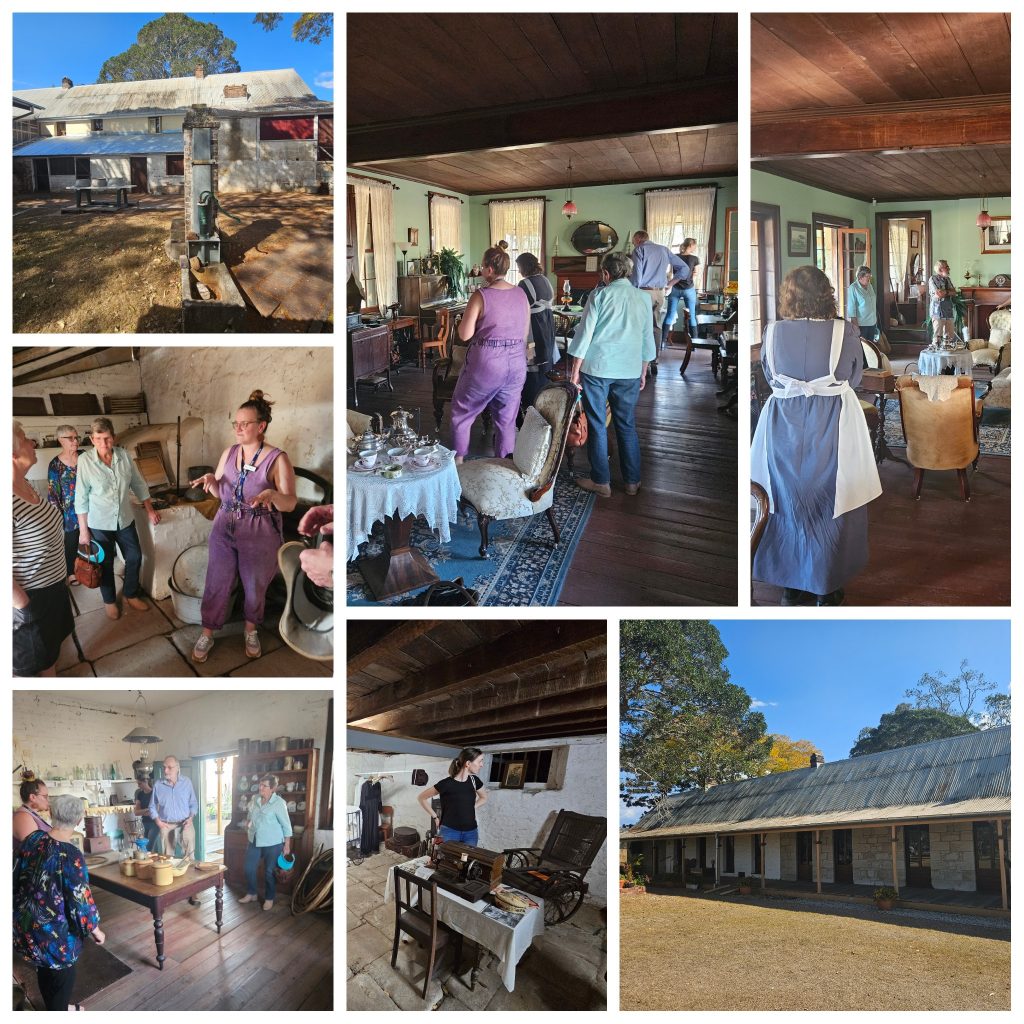CCHA Board meeting with Wolston House Management (23/8/2023)
Our secretary Jorien van Beukering had organised with her history colleague from the National Trust Dr. Anna Temby to conduct a meeting at Wolston House. Camp Columbia bordered on this historic property when it was built in 1942. We recognise the property in our information on our website in relation to the broader context of military history of the area.
Since white settlers started to move into the area, which later Camp Columbia became part of, it has had an amazingly long law enforcement history, right from its beginnings in 1842 till today. It started with Dr Stephen Simpson who in 1841 became the Acting Colonial Surgeon. In 1842 he became the Commissioner of Crown Lands, and after the military commander of the convict settlement left, also the Police Magistrate. At that time, he was the most senior government official in Brisbane. Simpson established a border police station close to the spot where John Oxley ended his exploration of the Brisbane River in 1823, which he called Termination Hill. The Border Police Station operated with 4 troopers and 6 convicts, manning a small slab hut and a lock-up. This was a strategic point as it was here where the convict road from Brisbane to Ipswich met the Brisbane River. Convicts also built here the station’s office-cum-residence.
Ten years later (1851-52) Simpson bought private land 3 kms north and built his private home. Wolston House still stands here on the river.
The discussion we had with Anna concentrated around possible collaboration as both Camp Columbia and Wolston House are on the western edge of Brisbane. There was broad agreement and we will look at opportunities as they arrive. Collaboration opportunities may centre around Wolston House’s interest in telling a larger story about the wider area, not just the Farmhouse – this is of course relevant to the CCHA and its projects. Collaboration could also happen in telling local wartime community stories (as opposed to pure military history), or a combination of the two.
We also discussed management issues, in particular in relation to staffing and funding. With dwindling volunteer support and the different ways younger generations are involved, the operation of heritage sites will also have to change. This means that it becomes necessary to generate enough funds to pay for a permanent paid position for a manager/coordinator who can promote and market the heritage site and, in this way, generate further funding for the site and attract volunteers. In regard to young people, we discussed that attracting them to heritage projects needs to be framed as an opportunity for them to upskill and gain value for themselves for their future career pathway. Furthermore, to attract the younger generation digital media is the key to engagement.
It was good to discuss this issue with an organisation which faces similar problems. In this way we can learn from each other and support each other.
We also of course had a tour of the property, which is certainly worth a visit. It is open for school and group bookings. See their website for further details.

